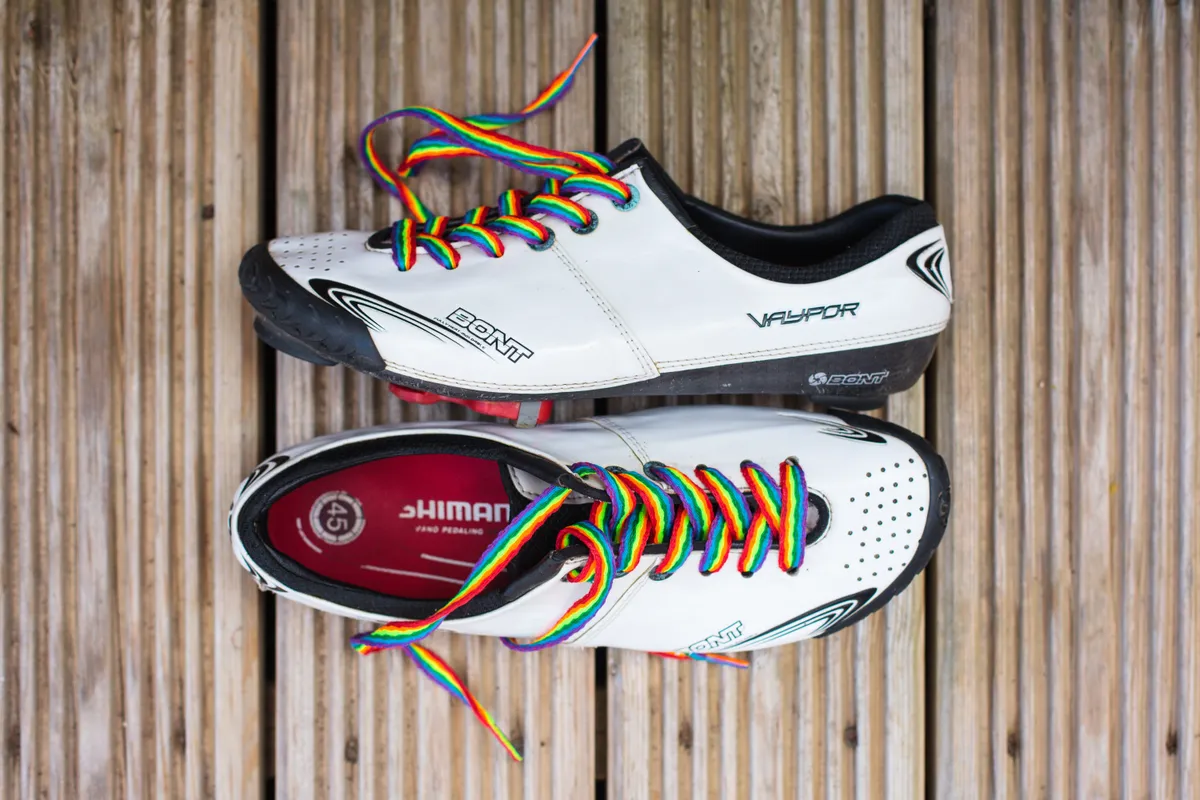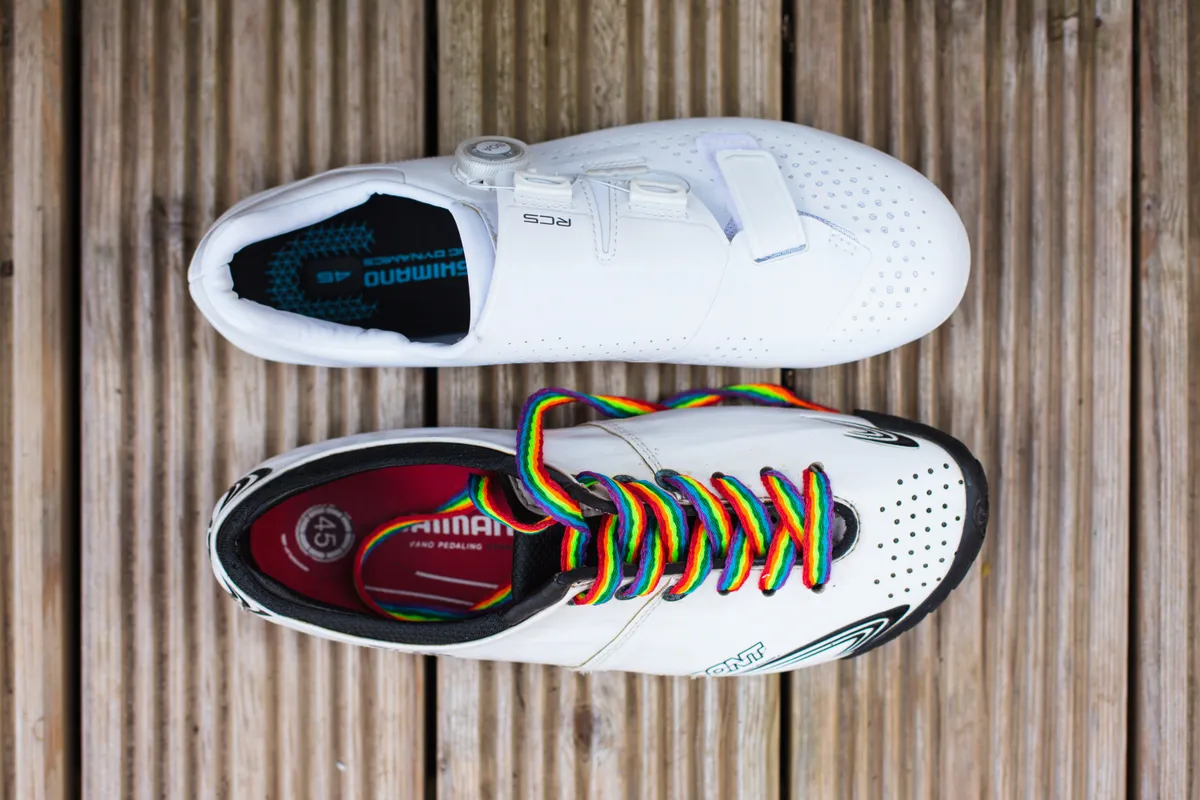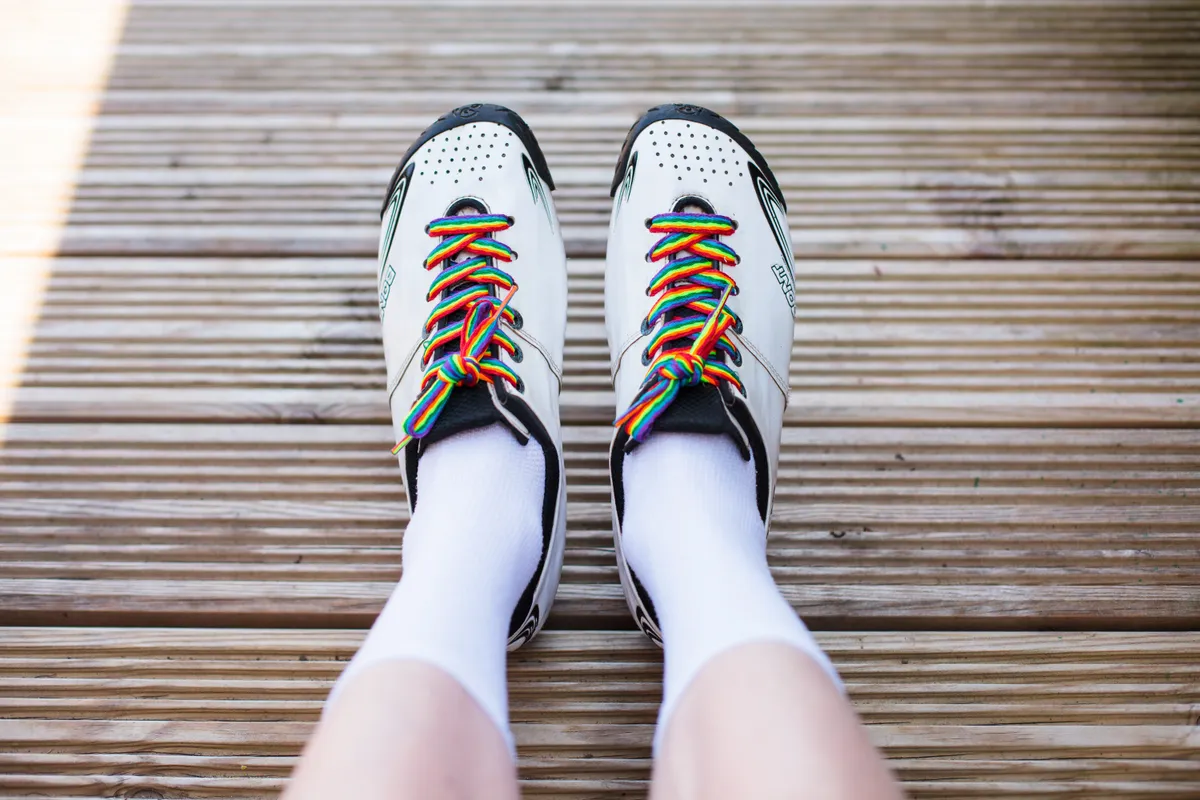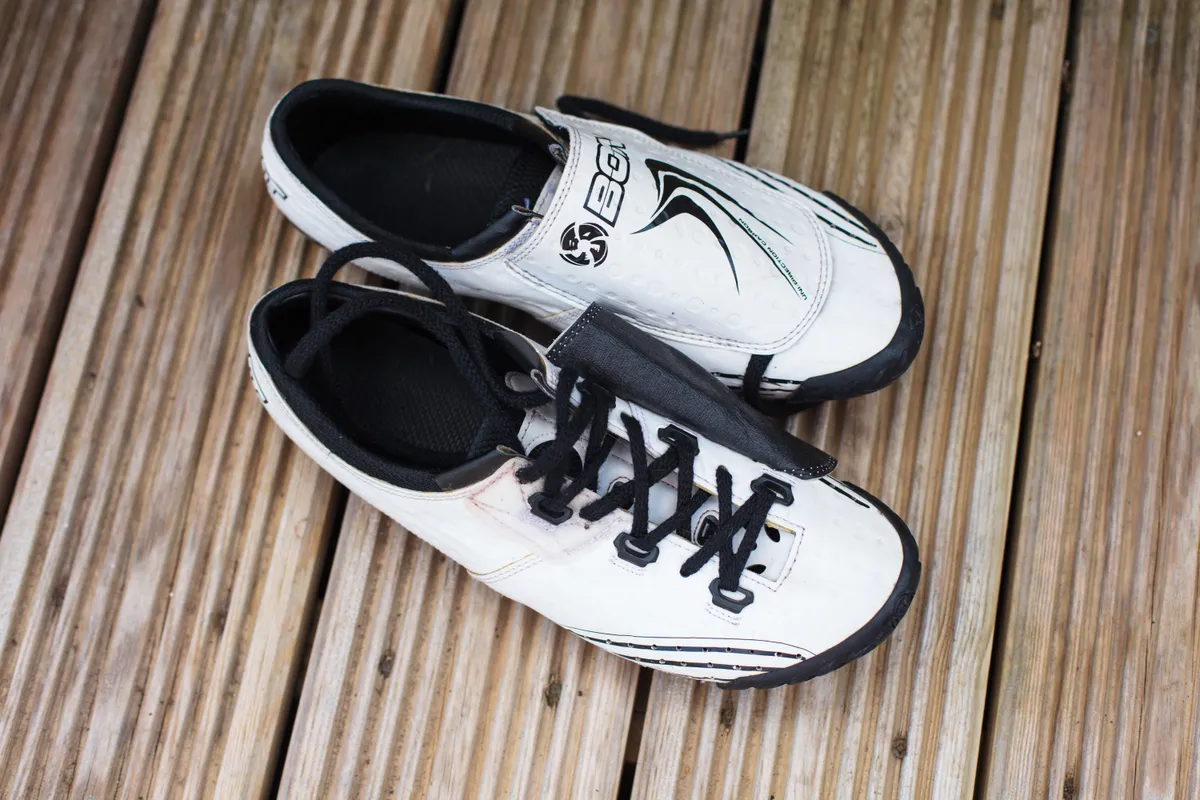It probably won’t come as a surprise to many that I’ve also chosen a pair of cycling shoes for my turn at High-Mileage Heroes, the series where we celebrate the products we use that have stood the test of time.
Along with saddles and handlebars – the other two key contact points on your bike – shoes sit in the centre of a venn diagram where personal taste and low wear rates collide, meaning you can settle on something you like and keep using it for a long time.
Of course, like with butts and saddles, feet and shoe preferences can vary significantly. For me, though, Bont cycling shoes really hit the spot.
I’ve had this set of Bont Vaypor Classic cycling shoes for more than five years now, but despite now owning more than a few pairs of posh road cycling shoes, they remain a pair I reach for over and over when heading out on the bike (or staying in on the smart trainer).

Shoes that last
While many brands have a last that’s relatively narrow in the forefoot, Bont cycling shoes use a last that is (according to the brand) far more anatomical than what most other brands use.
They certainly look different, with a much roomier toe box being the most obvious area of difference. For some, the way this looks can be a turn-off, but the extra space means I’ve never suffered from cramped toes in a pair of Bont cycling shoes.
What more people probably associate with Bont cycling shoes is the astronomically stiff, thermo-mouldable carbon soles.
I can honestly say there are few other cycling shoes that can match the feeling of absolute rigidity Bont’s bathtub-shaped soles provide.

The soles also have an exceptionally low stack height of just 3.6mm, which is one of the lowest on the market. For comparison, Shimano’s latest top of the range S-Phyre RC902 cycling shoes have a stack height of 4.9mm. A low stack height is desirable as having your foot closer to the pedal can improve your pedalling stability (in theory, anyway).
Of course, whether or not these things actually make any measurable difference to your pedalling efficiency is unclear, but I think they make these shoes feel great.
When switching back to cycling shoes with a more standard construction style, especially mid-range ones like Shimano’s excellent value RC5 (which measure a respectable 8 out of 12 on Shimano’s arbitrary stiffness scale), the difference is immediately detectable – in a bad way.

Perhaps counterintuitively, I find the stiffer Bont’s to be a lot more comfortable.
It’s hard to pinpoint exactly why this is, but stiffer road cycling shoes being more comfortable is something myself and my colleague Jack Luke appear to agree on.
If I was to speculate, I think it might be something to do with stiffer soles more evenly distributing the pressure from the pedal (whereas a less-stiff sole would flex around the pedal axle), but I don’t have any evidence to back that up.
In contrast, I’m also sure that if your cycling shoes don’t fit your feet well, such stiffness may also be more uncomfortable, as any pressure points would be exaggerated. It makes intuitive sense to me that increased stiffness would equate to less margin for error in terms of fit.
Given this, the fact you can also thermo-mould Bont’s shoes to fit the precise contours of your feet is a massively underrated feature. I’ve taken advantage of it on all three pairs I own.
BikeRadar’s High-Mileage Heroes
High-Mileage Heroes is a new series on BikeRadar showcasing the products that have stood the test of time and become part of our everyday riding.
These aren’t reviews, but rather a chance to talk about the kit we depend on and the products we choose to use when we’re not reviewing fresh gear.
More from High-Mileage Heroes:
Classic looks
As for why I like this particular pair so much, it’s mainly because they’re lace-up.
Around the time I purchased these, lace-up cycling shoes were having a proper revival (mainly thanks to Taylor Phinney and his use of Giro’s Empire cycling shoes).
I like lace-up cycling shoes for three reasons. First off, I appreciate the even distribution of pressure you can achieve with laces. Yes, they’re slower to put on and not adjustable on the fly, but neither of those things have ever really bothered me in practice.

Secondly, as there’s no need for ratchets or dials on the outside of the shoe, the aerodynamic profile of the shoe is improved slightly too.
It’s a small difference, no doubt, but Specialized once claimed that, with a lace-cover in place, its S-Works Sub6 lace-up shoes could save you 35 seconds over 40km versus its S-Works 6 shoes (which had two Boa dials and a velcro strap).
Bradley Wiggins also used a pair of Giro’s Empire SLX lace-up shoes for his successful Hour Record attempt in June 2015, so there’s clearly something in it. As someone who enjoys a time trial, it’s a marginal gain I can’t resist.
Lastly, and most importantly, I think lace-up cycling shoes just look cool. They’re much simpler and more elegant than ones with Boa dials, which often look a bit fussy with all their various dials, straps and wires.
Non, je ne regrette rien
If I was to make two small criticisms of the Vaypor Classics, it would be that the stock insoles are a bit naff and cleat bolt holes aren’t adjustable. The first of those issues is easily solved, but the latter unfortunately isn't.
A greater cleat positional adjustment range would be very much worth the small weight penalty. To be fair, I think Bont may agree, as this is something it has incorporated into the Helix, one of its latest high-end road cycling shoes.
Although the Durolite and memory foam uppers have remained impressively hardy throughout the years, my set is starting to look a little tatty (especially so after a spill in 2019), so my only regret is that I didn’t buy a second pair.

This set should last a little while yet. The heel and toe bumpers are replaceable, and even though Bont has since sadly discontinued this model, it does still sell those as spare parts. Likewise, the laces are also easily replaceable.
In contrast, on a pair of Bont Zero cycling shoes I also own, the Atop dial on the right shoe broke, and Bont wasn’t able to supply a spare.
Not wanting to retire an otherwise perfectly good pair of shoes, I instead removed the dials from both shoes and punched lace holes in the uppers underneath the aero covers. Problem solved, but it's also a problem I won’t ever have with the Vaypor Classics.

I’m under no illusions my Vaypor Classics will last forever though, so I’ve had to look elsewhere for a replacement pair of lace-up cycling shoes (I acquired a set of Nimbl’s Air cycling shoes last year, which I’ve grown to appreciate more since replacing the stock insoles).
If you’re reading this, Bont, please consider releasing an updated version. You’ll have an eager customer here.
